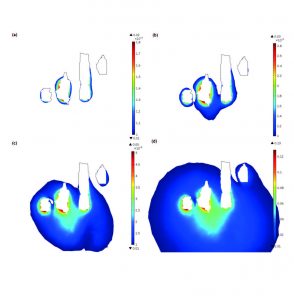| Numerical modeling is getting more and more prominent in most geoengineering fields. It offers a unique way to study and better understand complex physical phenomena that must be forecasted facing new industrial projects and uses of the solid earth medium. For underground structures, the macroscopic response of geomaterials, especially rocks, are strongly governed by coupled hydro-mechanical and chemical processes occurring at multiple scales. The behavior of geomaterials involves several physics with different time and length scales. The behavior at the macroscopic scale is governed by that of the micro scale level (pore scale). Underground structures are subjected to different time-dependent or independent physical loading and initial state : mineralogy, water-gas, saturation degree, fluid pressure, temperature, mechanical loading (static, cyclic, dynamic), geochimical reactions, cracking, strains localization and many other parameters. |

Long term behaviour of salt caverns: contour of von Mises stress (MPa)
at the plugging stage (a) and 10 (b), 100 (c) and 500 (d) years after |
|
One of the goal of Computational Geomechanics is to predict as accurately as possible the behavior of underground structures in such frameworks. In order to meet the challenge posed by the complexity of such boundary value problems, increasingly sophisticated numerical models are being developed.
The purpose of this Symposium is multifold : it aims first to offer a comprehensive stock of the most recent advances in Computational Geomechanics, including both new attributes and current limits; Second : compare modelling methods and approaches; and last to show the relevance of computation on both real cases and new projects.
The Symposium wants to address a wide range of topical issues, from the fundamentals and theoretical points, to real case studies in many fields of underground operations.
|

Long term behaviour of salt caverns: contour of displacement magnitude (m) at the plugging stage (a) and 10 (b), 100 (c) and 500 (d) years after |